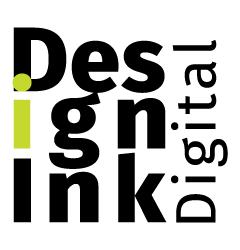Creating a website isn’t just about making it look attractive; it’s about ensuring your visitors have the best experience possible while also keeping search engines happy. UX/UI (User Experience/User Interface) design and SEO (Search Engine Optimization) are two vital pieces of the puzzle that directly impact traffic, engagement, and conversions.
This guide will help you understand how these two critical aspects of web development work together and offer actionable tips to create a website that’s as functional and user-friendly as it is search engine optimized.
Prioritize Responsive Design for All Visitors
Ever landed on a website using your phone only to find yourself scrolling sideways to read the content? Frustrating, right? Today, over half of web traffic comes from mobile devices, meaning that a responsive design isn’t just a nice-to-have; it’s a necessity.
A responsive website automatically adjusts to fit screens of all sizes, ensuring a seamless experience whether users are visiting from their phone, tablet, or desktop. Not only does this improve user experience, but Google also rewards responsive websites with better rankings.
Quick Tip:
Aim for a mobile-first design approach. Tools like Google’s Mobile-Friendly Test can help you pinpoint areas needing improvement.
Enhance Loading Speeds to Keep Users Engaged
Did you know that nearly 40% of visitors will leave a site if it takes more than three seconds to load? Slow-loading pages frustrate users and send negative signals to search engines, affecting your rankings.
By optimizing your images, utilizing caching, and minimizing code, you can improve page speeds significantly. If you’re running an e-commerce platform, consider using a CDN (Content Delivery Network) to ensure fast load times, regardless of where your users are located.
Why It Matters:
Whether users are shopping online or reading your blog, fast-loading pages keep them engaged and convert hesitant visitors into loyal customers.
Create Intuitive Navigation for a Better Journey
Think of your website like a map; the easier it is to find the treasure (a product, service, or piece of content), the more likely users are to stay and explore. Clear menus, breadcrumbs, and internal links make navigation intuitive and effortless.
From an SEO perspective, a well-structured site allows search engine crawlers to index pages more effectively, helping you rank higher in search results.
Pro Tip:
Use concise menu labels and avoid overwhelming users with options. When your navigation is simple, users will spend more time where it counts.
Don’t Overlook Aesthetic Consistency
While functionality is key, aesthetics play a huge role in building trust and driving conversions. Using a consistent color palette, typography, and imagery not only creates a cohesive brand presence but also enhances usability and readability.
For instance, choosing high-contrast color combinations can improve accessibility for users with vision impairments. And remember, clean and organized layouts make information easier to digest for everyone.
Simple Action Step:
If you’re unsure where to start, consult a professional. Services like our website design from DesignInk Digital can help transform your ideas into a beautifully functional website.
FAQs About Website Design
What’s the difference between UX and UI design?
UX (User Experience) focuses on how users interact with your site, ensuring they can find what they need efficiently and enjoyably. UI (User Interface), on the other hand, is all about the look and feel, including colors, buttons, and typography. Together, they create a cohesive experience for your visitors.
How does SEO connect to website design?
Website design directly influences SEO (Search Engine Optimization) through factors like navigation, loading speeds, and mobile responsiveness. A well-designed site makes it easier for search engines to understand and index your content, improving your visibility in search results.
At DesignInk Digital, we not only specialize in custom website solutions that combine strong UX/UI principles with advanced SEO strategies — we are great at it! Based in Boulder, Colorado, we help businesses design websites that reflect their vision and achieve their goals. Let’s chat!

